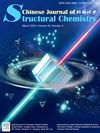Microenvironment regulation of anode-electrolyte interface enables highly stable Zn anodes
IF 5.9
4区 化学
Q1 CHEMISTRY, INORGANIC & NUCLEAR
引用次数: 0
Abstract
H2O-induced side reactions and dendrite growth occurring at the Zn anode-electrolyte interface (AEI) limit the electrochemical performances of aqueous zinc ion batteries. Herein, methionine (Met) is introduced as an electrolyte additive to solve the above issues by three aspects: Firstly, Met is anchored on Zn anode by amino/methylthio groups to form a H2O-poor AEI, thus increasing the overpotential of hydrogen evolution reaction (HER); secondly, Met serves as a pH buffer to neutralize the HER generated OH−, thereby preventing the formation of by-products (e.g. Zn4SO4(OH)6⋅xH2O); thirdly, Zn2+ could be captured by carboxyl group of the anchored Met through electrostatic interaction, which promotes the dense and flat Zn deposition. Consequently, the Zn||Zn symmetric cell obtains a long cycle life of 3200 h at 1.0 mA cm−2, 1.0 mAh cm−2, and 1400 h at 5.0 mA cm−2, 5.0 mAh cm−2. Moreover, Zn||VO2 full cell exhibits a capacity retention of 91.0% after operating for 7000 cycles at 5.0 A g−1. This study offers a novel strategy for modulating the interface microenvironment of AEI via integrating the molecular adsorption, pH buffer, and Zn2+ capture strategies to design advanced industrial-oriented batteries.

求助全文
约1分钟内获得全文
求助全文
来源期刊

结构化学
化学-晶体学
CiteScore
4.70
自引率
22.70%
发文量
5334
审稿时长
13 days
期刊介绍:
Chinese Journal of Structural Chemistry “JIEGOU HUAXUE ”, an academic journal consisting of reviews, articles, communications and notes, provides a forum for the reporting and discussion of current novel research achievements in the fields of structural chemistry, crystallography, spectroscopy, quantum chemistry, pharmaceutical chemistry, biochemistry, material science, etc. Structural Chemistry has been indexed by SCI, CA, and some other prestigious publications.
 求助内容:
求助内容: 应助结果提醒方式:
应助结果提醒方式:


